
Where We Be
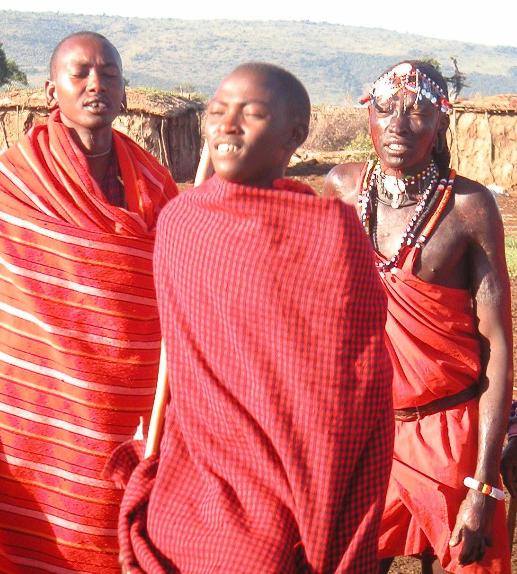
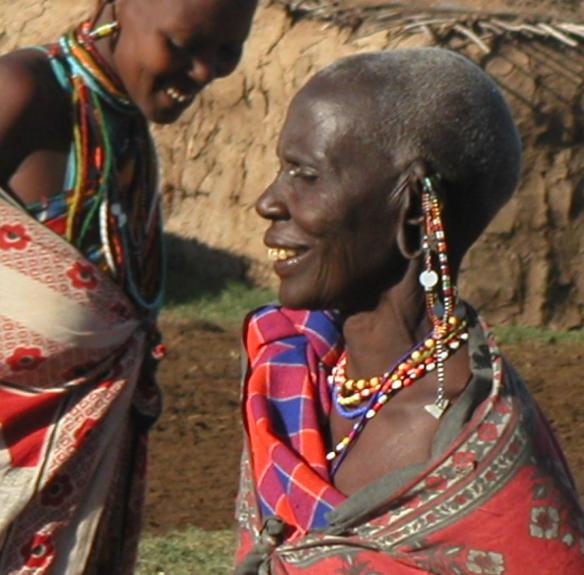
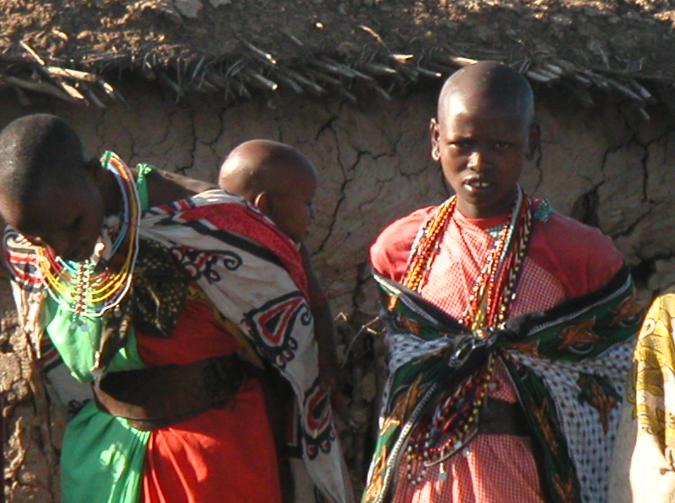
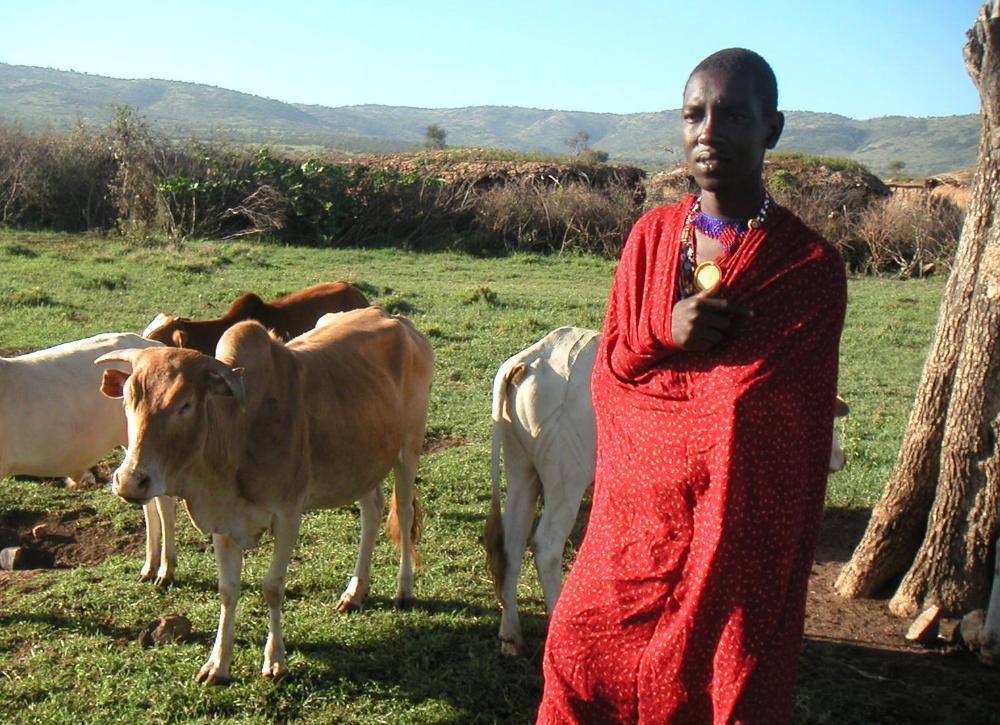
| Masai Village -- Day 3 |
Our guide had something different in store for
us this morning. He suggested a visit to a local
Masai village. We arrived at 7:45 am, paid $20
each for the visit, and were introduced to the
chief and his son. We watched the cattle and
goats being herded out to the grasslands, then
the chief invited us inside the boma, or fence
of thorns, that surrounds the village.
It was muddy and grassless inside the boma.
"This is where we keep the cows at night," he
told us. Ahh, that explains it. We went inside
one of the Masai huts, made of dung and
sticks, and it was so dark we had to stand still
for a full minute to let our eyes adjust. We sat
around a smoky pit from which a thin wisp of
smoke emanated. Three narrow slits served as
windows to let a small amount of light in (and a
small amount of smoke out). A crinkly cowhide
mattress was draped over a hard wooden bed.
The floor was packed dirt. Honestly, this was
too small and rustic even for us to contemplate!
We had a wide-ranging discussion with the
chief's son about the traditional Masai diet of
cow's blood and milk, about the ancient Masai
practice of hunting lions as a rite of passage,
and about why polygamy is a good thing as far
as the Masai are concerned (of course we got a
very male-centric view coming from the chief's
son). All in all, a very eye-opening cultural visit.
us this morning. He suggested a visit to a local
Masai village. We arrived at 7:45 am, paid $20
each for the visit, and were introduced to the
chief and his son. We watched the cattle and
goats being herded out to the grasslands, then
the chief invited us inside the boma, or fence
of thorns, that surrounds the village.
It was muddy and grassless inside the boma.
"This is where we keep the cows at night," he
told us. Ahh, that explains it. We went inside
one of the Masai huts, made of dung and
sticks, and it was so dark we had to stand still
for a full minute to let our eyes adjust. We sat
around a smoky pit from which a thin wisp of
smoke emanated. Three narrow slits served as
windows to let a small amount of light in (and a
small amount of smoke out). A crinkly cowhide
mattress was draped over a hard wooden bed.
The floor was packed dirt. Honestly, this was
too small and rustic even for us to contemplate!
We had a wide-ranging discussion with the
chief's son about the traditional Masai diet of
cow's blood and milk, about the ancient Masai
practice of hunting lions as a rite of passage,
and about why polygamy is a good thing as far
as the Masai are concerned (of course we got a
very male-centric view coming from the chief's
son). All in all, a very eye-opening cultural visit.
| We'll definitely remember this fun encounter with a completely different culture |
| So many kids appeared, as if by magic, that we were only able to give out two Life Savers to each, even though we had brought close to thirty rolls! |
| The women sang and danced for us -- and pulled Robin into the circle with them! |
| The chief's son was of the opinion that Masai men work much harder than the women, but we had our doubts about that |
| We enjoyed seeing their colorful clothing and necklaces -- not to mention their warm smiles |
| Then we got a chance to meet some of the women of the village |
| Each Masai took a turn jumping straight up as high as he could while the others chanted |
| Once an age-set of male adolescents passes together through the circumcision ceremony, they become an unbreakable band of brothers. Not only are they entitled to marry and become junior elders, but they are also permitted to sleep with the wife of any of their comrades. Thus a Masai woman doesn't marry just one man but a whole age-set. |
| The cattle stay inside the boma at night, which explains why it's so muddy and grassless. The huts themselves are built of dung and sticks. |
| The chief's eldest son, Joseph, served as our guide during our visit. Joseph described the traditional Masai diet of cow's blood and milk. "I wish you could try some," he said wistfully, but we were just as glad there was none available that morning. |
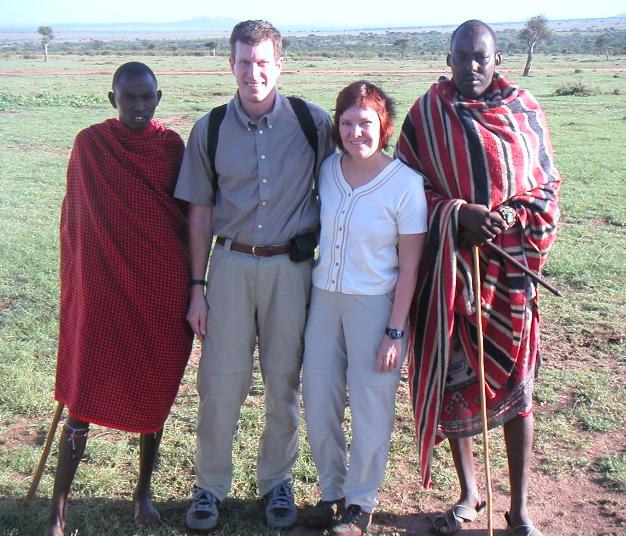
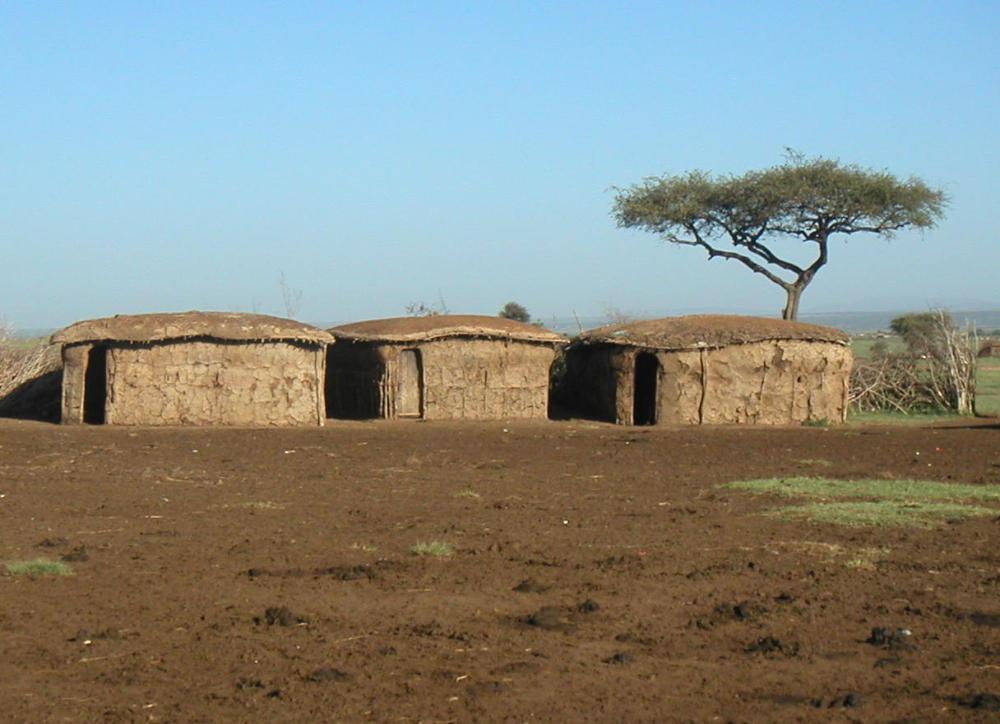
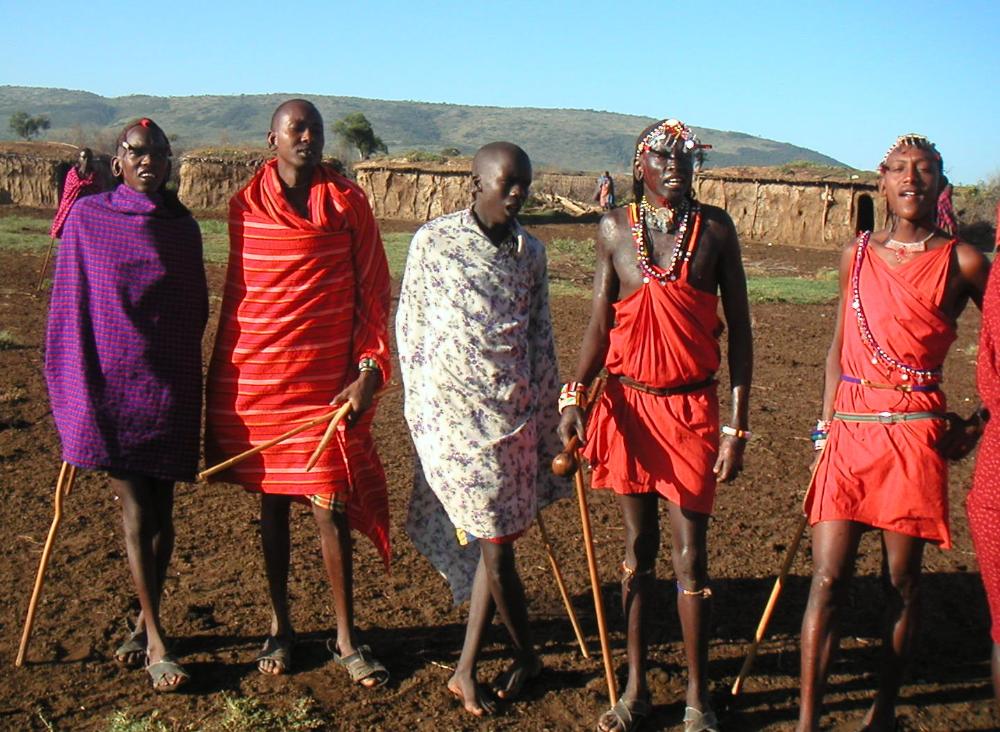
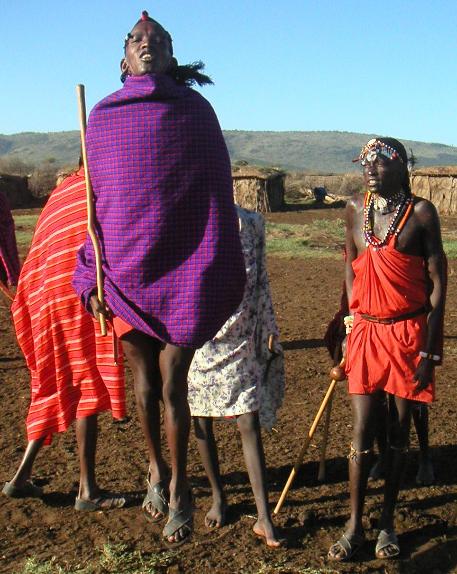
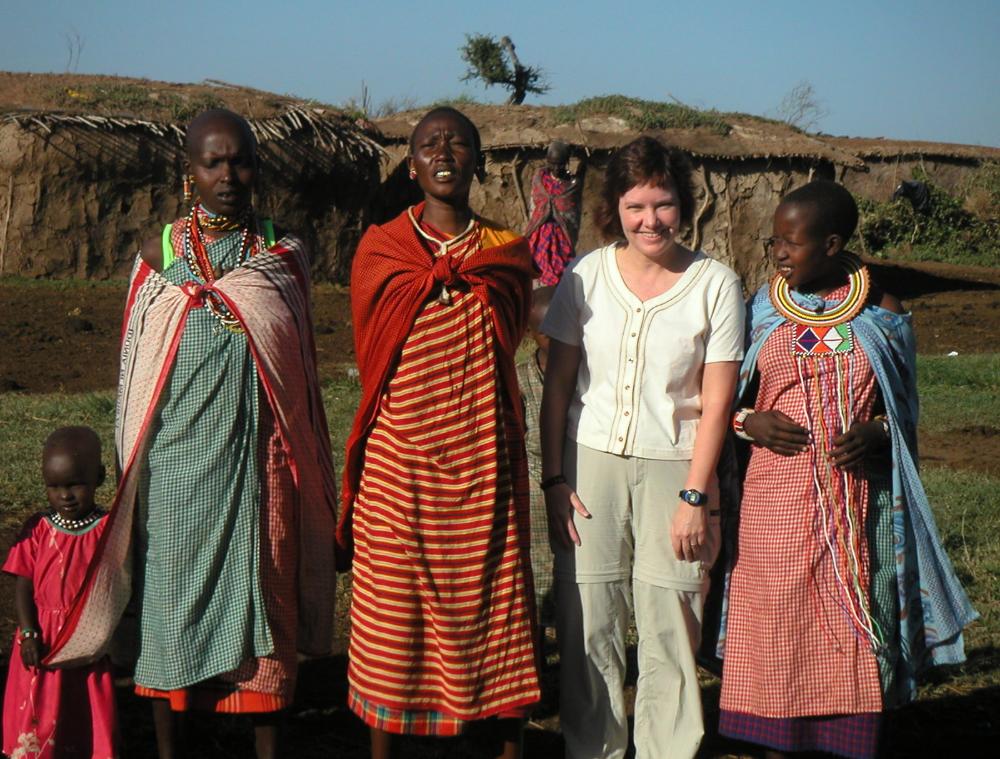
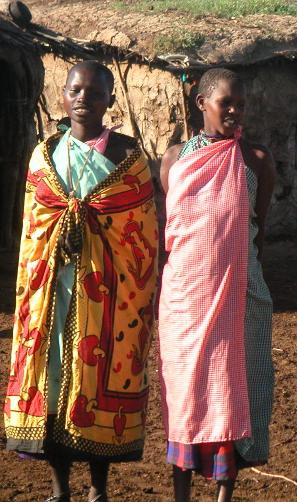
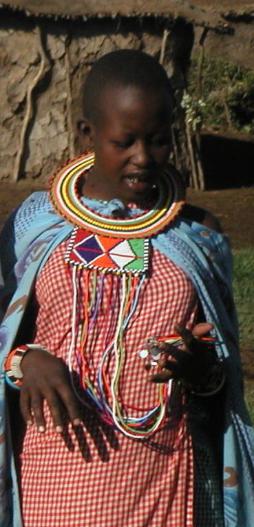
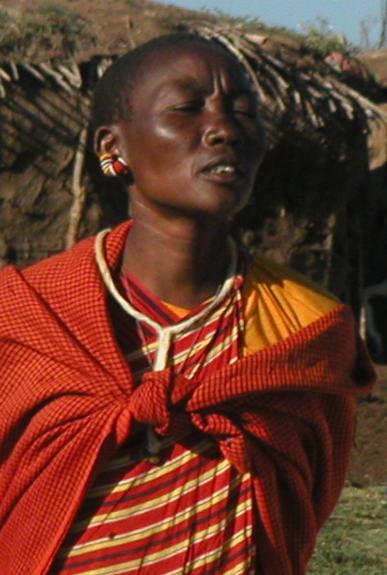
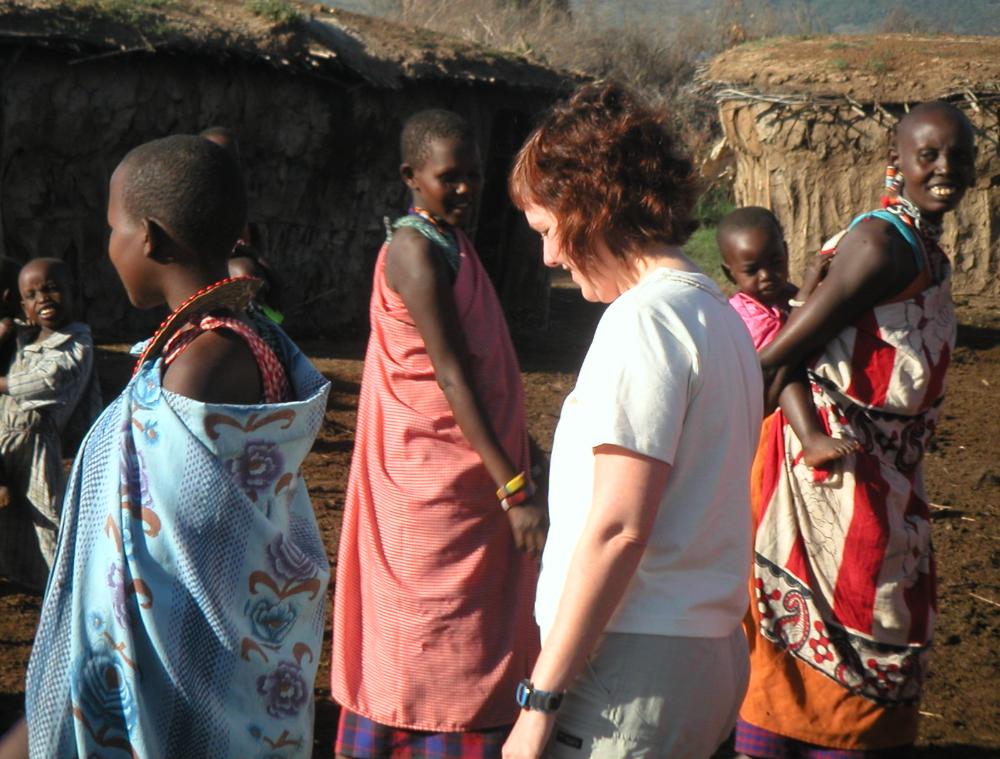
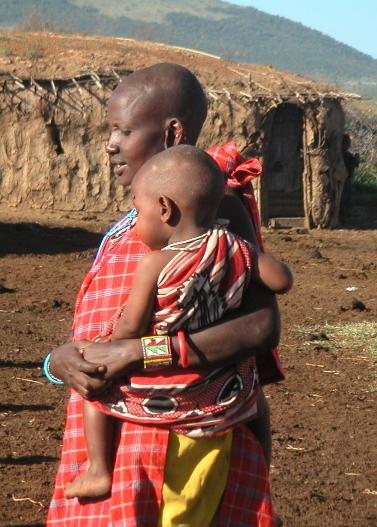
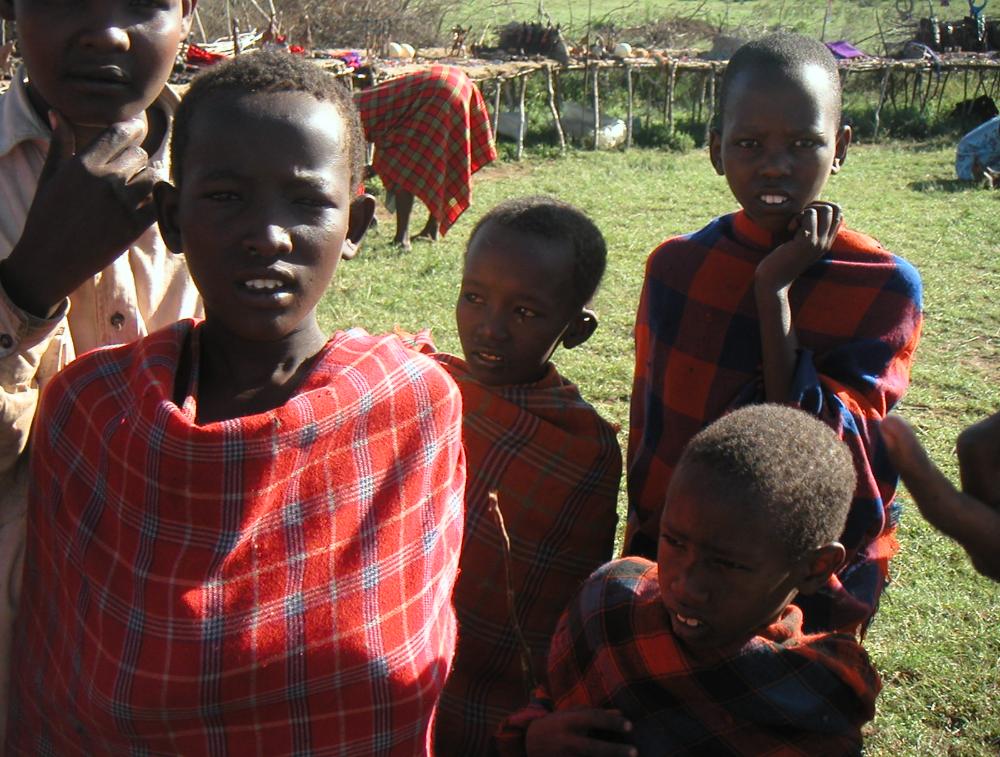
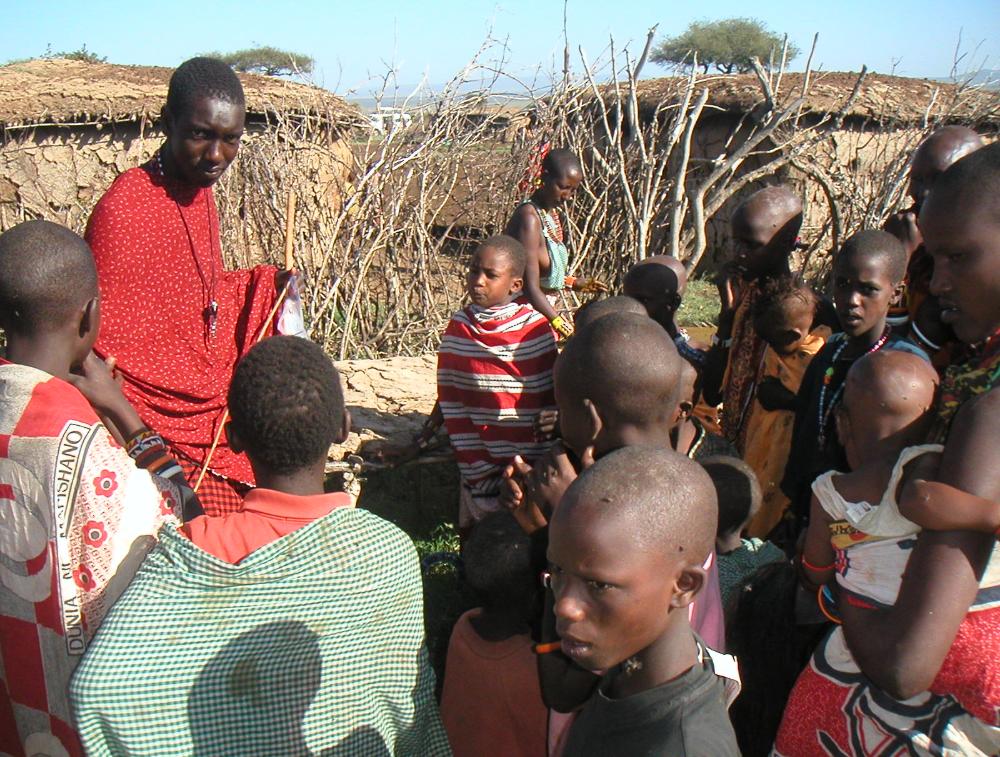
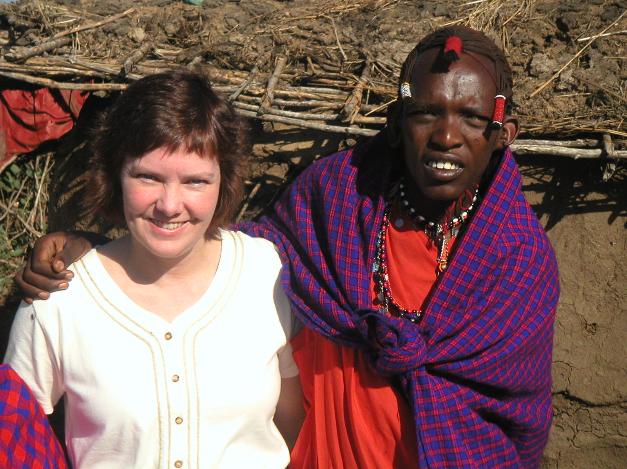
| Finally we got to meet the children of the village. We brought chocolate and Life Savers to share with them. Joseph tried to get them to line up but it was no easy task. |
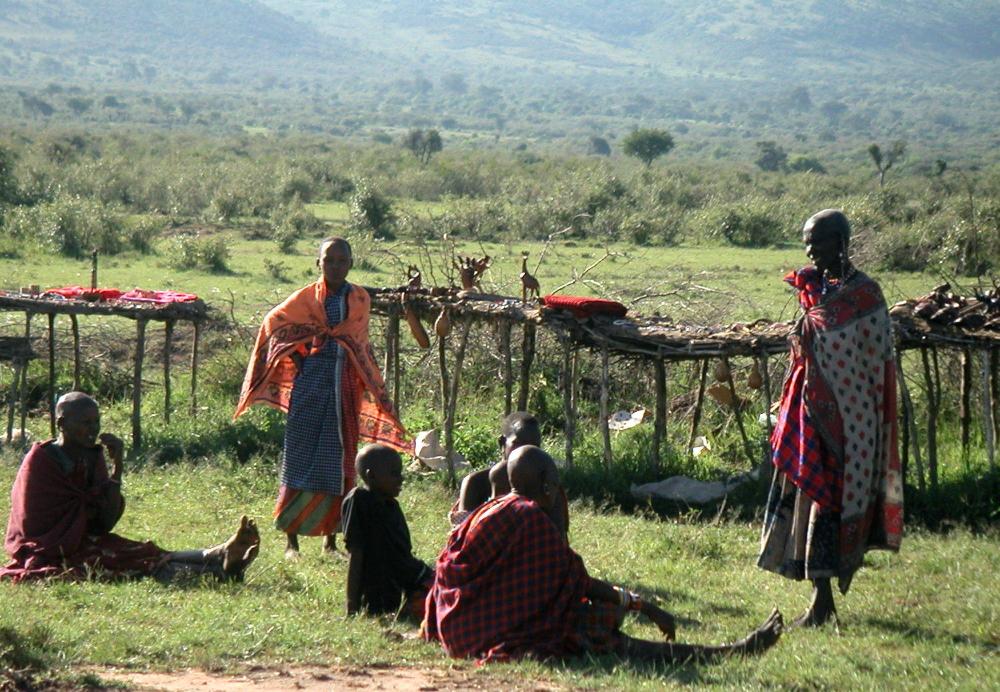
| On our way out, we visited the outdoor market of Masai handicrafts -- beaded necklaces and bracelets, carved animal statues, masks, metal jewelry, and clothing. Tables were set up in a semicircle and covered with goods, with each table representing a “family” in the village. We did quite a bit of damage before saying farewell. |
| At the Masai village we met with the chief (right) who invited us inside the village -- once the cattle and goats had been herded out! |
| After chatting with Joseph inside one of the huts, we headed back outside and met some of the Masai warrior caste |
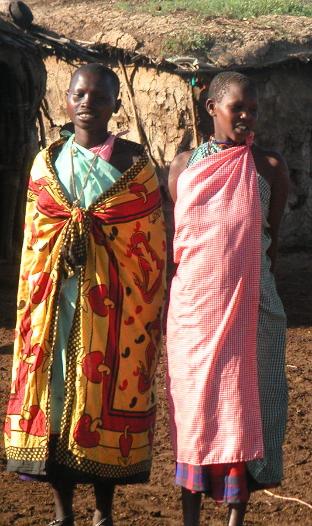
| Night Safari |
After dinner we went on a terrific two-hour night
game drive. The spotter shone a bright light
into the savannah, moving it quickly from spot
to spot, looking for the shine of eyes both on
the ground and in the trees. Early on we broke
up a fight between a hyena and a jackal, each
running in a different direction as soon as our
light hit them, like criminals caught in the act. A
definite highlight was seeing a bushbaby that
literally bounced like Tigger across the grass!
Another favorite was the African kangaroo or
springhare, which looks like a rabbit with
oversized hind legs and foreshortened front
legs. We also saw bat-eared foxes digging in
the dirt, hunting for their prey underground.
After an hour or so the guides stopped in a vast
meadow. We got out of the vehicle -- at night --
in Africa. What were we thinking? We could
barely see the shadows of a large herd of zebra
crossing the far side of the meadow. Their
braying made for an eerie sound in the dark. We
knew there were hyena out there because we
had seen them earlier, and it sounded like the
zebra knew it too. We drank cocoa, looked up at
the stars in the southern sky, and thought how
nutty it was to be out on the savannah at night.
game drive. The spotter shone a bright light
into the savannah, moving it quickly from spot
to spot, looking for the shine of eyes both on
the ground and in the trees. Early on we broke
up a fight between a hyena and a jackal, each
running in a different direction as soon as our
light hit them, like criminals caught in the act. A
definite highlight was seeing a bushbaby that
literally bounced like Tigger across the grass!
Another favorite was the African kangaroo or
springhare, which looks like a rabbit with
oversized hind legs and foreshortened front
legs. We also saw bat-eared foxes digging in
the dirt, hunting for their prey underground.
After an hour or so the guides stopped in a vast
meadow. We got out of the vehicle -- at night --
in Africa. What were we thinking? We could
barely see the shadows of a large herd of zebra
crossing the far side of the meadow. Their
braying made for an eerie sound in the dark. We
knew there were hyena out there because we
had seen them earlier, and it sounded like the
zebra knew it too. We drank cocoa, looked up at
the stars in the southern sky, and thought how
nutty it was to be out on the savannah at night.